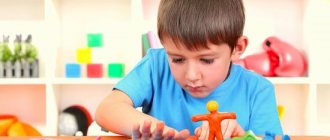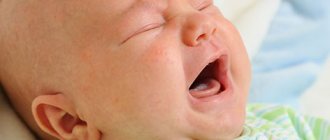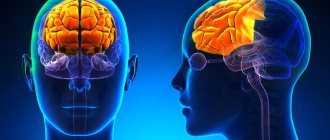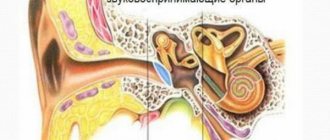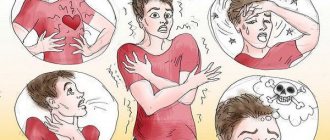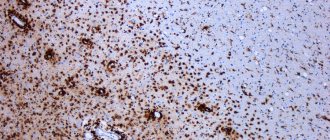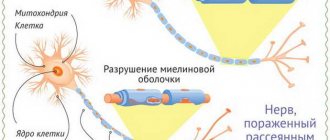Treatment of apraxia in Saratov, Russia, therapy of apraxia
Sarklinik provides treatment for certain types of apraxia in adults, adolescents, children, boys, girls, boys, girls, men, women in Saratov, Russia. The doctor knows how to treat apraxia , how to cure apraxia, how to get rid of apraxia, what to do with apraxia, where to go. At the first consultation, will the doctor tell you what types of apraxia there are? What are the characteristics of kinesthetic (kinetic) apraxia, aphasia and agnosia ? Why does oral apraxia, motor apraxia, constructive apraxia, articulatory apraxia, regulatory apraxia occur in children and adults? What is apraxia of walking and speech? What is the danger of motor left, right hand, left, parva leg, fingers, ideator apraxia? What are the principles for diagnosing apraxia ? Unfortunately, traditional methods, traditional medicine, diet, pills, medicines, drugs, traditional methods, spells, homeopathy rarely help in the treatment of apraxia. On the website sarclinic.ru you can see a doctor online for free.
Sign up for a consultation. There are contraindications. Specialist consultation is required.
Related posts:
Dysmorphophobia, treatment in Saratov, how to treat dysmorphophobia
Foville syndrome (ALF Foville) alternating pontine
Zones of the cerebral cortex, functions, human cerebral cortex: structure, activity
Human brain, child brain, sections, structure, brain treatment
Nocturnal enuresis code according to ICD 10 F 98.0
Comments ()
Report on the topic: “Disturbances of voluntary movements and actions - apraxia.”
Report on the topic: “Disturbances of voluntary movements and actions - apraxia.”
Disturbances of voluntary movements and actions are complex movement disorders, which are primarily associated with damage to the cortical level of motor functional systems.
This type of motor dysfunction is called apraxia in neurology and neuropsychology. Apraxia refers to such disorders of voluntary movements and actions that are not accompanied by clear elementary movement disorders - paralysis and paresis, obvious disorders of muscle tone and tremor, although combinations of complex and elementary movement disorders are possible. Apraxia primarily refers to disorders of voluntary movements and actions performed with objects.
The history of the study of apraxia goes back many decades, but until now this problem cannot be considered completely solved. The difficulties of understanding the nature of apraxia are reflected in their classifications. The most well-known classification, proposed at one time by G. Lipmann and recognized by many modern researchers, distinguishes three forms of apraxia: ideational, suggesting the disintegration of the “idea” of movement, its concept; kinetic, associated with a violation of the kinetic “images” of movement; ideomotor, which is based on the difficulties of transmitting “ideas” about movement to “movement execution centers.” G. Lipmann associated the first type of apraxia with diffuse brain damage, the second with damage to the cortex in the lower premotor region, and the third with damage to the cortex in the lower parietal region. Other researchers identified forms of apraxia in accordance with the affected motor organ (oral apraxia, apraxia of the trunk, apraxia of the fingers, etc.) or with the nature of the disturbed movements and actions (apraxia of expressive facial movements, object apraxia, apraxia of imitative movements, gait apraxia, agraphia etc.). To date, there is no unified classification of apraxia. A. R. Luria developed a classification of apraxia based on a general understanding of the psychological structure and brain organization of a voluntary motor act. Summarizing his observations of disorders of voluntary movements and actions, using the method of syndromic analysis, which isolates the main leading factor in the origin of disorders of higher mental functions (including voluntary movements and actions), he identified four forms of apraxia. First
he designated it as
kinesthetic apraxia.
This form of apraxia, first described by O. F. Foerster in 1936, and later studied by G. Head, D. Denny-Brown and other authors, occurs when the lower parts of the postcentral region of the cerebral cortex are affected (i.e., the posterior parts of the cortical nucleus motor analyzer: 1, 2, partially 40th fields, predominantly of the left hemisphere). In these cases, there are no clear motor defects, muscle strength is sufficient, there are no paresis, but the kinesthetic basis of movements suffers. They become undifferentiated and poorly controlled (the “shovel hand” symptom). Patients have impaired movements when writing, the ability to correctly reproduce various hand postures (postural apraxia); They cannot show without an object how this or that action is performed (for example, how tea is poured into a glass, how a cigarette is lit, etc.). While the external spatial organization of movements is preserved, the internal proprioceptive kinesthetic afferentation of the motor act is disrupted.
With increased visual control, movements can be compensated to a certain extent. When the left hemisphere is damaged, kinesthetic apraxia is usually bilateral in nature; when the right hemisphere is damaged, it often manifests itself only in one left hand.
Second form
apraxia, identified by A.R. Luria -
spatial apraxia,
or
apraktoagnosia -
occurs with damage to the parieto-occipital cortex at the border of the 19th and 39th fields, especially with damage to the left hemisphere (in right-handed people) or with bilateral lesions.
The basis of this form of apraxia is a disorder of visual-spatial synthesis, a violation of spatial representations (“top-bottom”, “right-left”, etc.). Thus, in these cases, visuospatial afferentation of movements is affected. Spatial apraxia can also occur against the background of intact visual gnostic functions, but more often it is observed in combination with visual optical-spatial agnosia. Then a complex picture of apraktoagnosia arises. In all cases, patients experience apraxia of posture and difficulties in performing spatially oriented movements (for example, patients cannot make the bed, get dressed, etc.). Strengthening visual control of movements does not help them. There is no clear difference when performing movements with open and closed eyes. This type of disorder also includes constructive apraxia
- difficulties in constructing a whole from individual elements.
With left-sided lesions of the parieto-occipital cortex, opto-spatial agraphia
due to difficulties in correctly writing letters that are differently oriented in space.
Third form
apraxia -
kinetic apraxia
- is associated with damage to the lower parts of the premotor area of the cerebral cortex (6th, 8th fields - anterior sections of the “cortical” nucleus of the motor analyzer).
Kinetic apraxia is part of the premotor syndrome, i.e., it occurs against the background of impaired automation (temporal organization) of various mental functions. Manifests itself in the form of the disintegration of “kinetic melodies”, i.e. a violation of the sequence of movements, the temporary organization of motor acts. This form of apraxia is characterized by motor perseverations
, manifested in the uncontrolled continuation of a movement that has once begun (especially if it is performed serially).
This form of apraxia was studied by a number of authors - K. Kleist, O. Förster, etc. It was studied in particular detail by A. R. Luria, who established in this form of apraxia the commonality of disturbances in the motor functions of the hand and speech apparatus in the form of primary difficulties in automating movements and developing motor skills . Kinetic apraxia manifests itself in a violation of a wide variety of motor acts: object actions, drawing, writing, - in the difficulty of performing graphic tests, especially with the serial organization of movements ( dynamic apraxia
). With damage to the lower premotor cortex of the left hemisphere (in right-handed people), kinetic apraxia is observed, as a rule, in both hands.
Fourth form
apraxia -
regulatory
or
prefrontal apraxia
- occurs when the convexital prefrontal cortex is damaged anterior to the premotor areas;
occurs against the background of almost complete preservation of tone and muscle strength. It manifests itself in the form of violations of the programming of movements, the disabling of conscious control over their execution, and the replacement of necessary movements with motor patterns and stereotypes. With a gross breakdown of voluntary regulation of movements, patients experience symptoms of echopraxia
in the form of uncontrolled imitative repetitions of the experimenter’s movements.
With massive lesions of the left frontal lobe (in right-handed people), along with echopraxia, echolalia occurs -
imitative repetitions of heard words or phrases.
Regulatory apraxia is characterized by systemic perseverations
, i.e., perseveration of the entire motor program as a whole, and not of its individual elements. Such patients, after writing under dictation in response to a proposal to draw a triangle, trace the outline of the triangle with movements characteristic of writing, etc. The greatest difficulties in these patients are caused by changing programs of movements and actions. The basis of this defect is a violation of voluntary control over the implementation of movement, a violation of speech regulation of motor acts. This form of apraxia most clearly manifests itself when the left prefrontal region of the brain is damaged in right-handed people.
The classification of apraxia created by A. R. Luria is based mainly on the analysis of motor dysfunction in patients with damage to the left hemisphere of the brain. The forms of disturbance of voluntary movements and actions with damage to various cortical zones of the right hemisphere have been studied to a lesser extent; This is one of the urgent tasks of modern neuropsychology.
Prevention
Preventive measures that effectively help prevent this problem have also not been developed. Despite this, there are a number of recommendations that significantly reduce the risk of the occurrence and development of movement disorders:
- giving up bad habits and alcohol;
- make regular walks in the fresh air and exercise;
- regulate your diet;
- eat a balanced diet, consume only healthy foods and in quantities necessary for the body;
- visit the hospital regularly and undergo a full examination;
- Monitor your blood pressure and if surges are observed, it is better to consult a doctor about this problem.
Apraxia is a rather complex and serious disease, as a result of which a person loses the motor function of certain organs or parts of the body, and it is difficult for him to carry out even the most basic manipulations with objects.
People suffering from this disease are dependent on society, in particular on family and friends, since they are simply unable to perform certain operations. Be healthy!
Causes and possible diseases
Apraxia is caused by brain damage (brain damage) in the vocal dominant hemisphere. This is usually a left-sided (or bilateral) stroke or other lesion. In addition, apraxia can also be caused by, for example, degenerative diseases. For example, Alzheimer's disease is the most common cause of severe apraxia. Other forms of dementia (dementia with Lewy bodies, frontotemporal dementia = Pick's disease) can also cause this disorder.
Diagnostics
Structural abnormalities are often tested by asking the patient to draw a 2D model or assemble an object. Some researchers believe that the neural mechanisms involved in drawing and copying are different and should be tested individually. Free drawing is a commonly used test in which the patient is asked to draw a named object. It can be an effective tool for measuring a patient's ability to maintain spatial relationships, organize drawing, and draw complete shapes. The complexity of the task should be noted, since such tasks often require lexical-semantic abilities, as well as imaginative thinking abilities.
Building a Basic Dictionary
With this and other approaches, it is very important to always start with the basic vocabulary. This is the name of 10-20 words that parents and specialists choose
The main dictionary should include those words that are most often used in everyday speech (for example, “mom” and “dad”), have a special meaning for the child (for example, “train”, if the child really loves trains), and indicate the most common actions (for example, “eat”, “go”, etc.) and which are easiest to imitate (depending on the child’s skills).
Together with a specialist, the child will practice pronouncing these words in structured lessons. At home, you will practice saying these words in natural situations when the child encounters these people, objects or actions throughout the day.
As with any new skill, constant repetition and practice is the best way to improve results and help your child become more independent. At first, your child may need help pronouncing the word. Then gradually she learns to say it on her own without your prompting. After this we can enter a new word to form a phrase and so on.
Typically, therapy for apraxia is a combination of all of these approaches.
What can you do at home
If your child has been diagnosed with apraxia, there are many strategies you can use at home.
- Take the item the child wants. Hold it to your mouth and name it clearly. For example: “Steam locomotive. Do you want a steam locomotive? Repeat the name again and then give it to the child. This strategy encourages the child to observe her mouth movements and associates them with what she wants.
- Offer your child a choice of two objects, again holding them close to your mouth so that the child can see them clearly. This will encourage her to use the right word or at least point to what she wants. For example: “Do you want an apple or an orange?” If she names or points to an apple, then you repeat: “You want an apple.”
-You can use various objects to enhance or change your voice and thus attract the child's attention. For example, say something to your child through an empty cardboard toilet paper cylinder or through a voice changing app
See if the child responds or makes any sounds in response. Praise her for any effort. Your goal is mutual communication.
- Make the words more interesting! Accentuate sounds at the beginning and end of words
Again, your goal is to attract the child's attention and encourage her to imitate
— Add sound effects to reading books and playing with toys. Everyone can moo like a cow or make noise like an airplane! Change the volume and tone of sounds.
— Repeat basic vocabulary words in simple sentences or activity descriptions as often as possible. Do this when you are doing something fun and interesting for your child. For example, when you blow bubbles, say and emphasize the basic words "bubbles" and "blow." Focus on following the same actions with the same words every day. Let these words be very simple. Use short sentences only. Pause before doing something or giving your child a desired object to encourage the child to repeat the word after you.
- Encourage imitation through songs. Many songs are accompanied by movements. For example, “If you like clap your hands,” and so on. Music often captivates children and encourages them to copy your words and movements more than usual.
For older children, use your phone or tablet to write down basic vocabulary words. You can accompany them with a video clip of you pointing at your mouth and slowly saying the word twice. We recommend creating a special folder on your phone or tablet so that your child can watch these videos with you or on their own.
We hope you find the information on our website useful or interesting. You can support people with autism in Russia and contribute to the work of the Foundation by clicking on the “Help” button.
